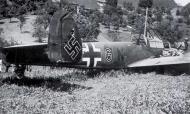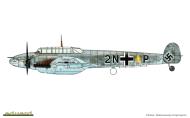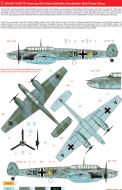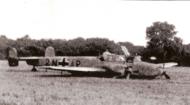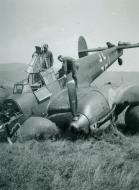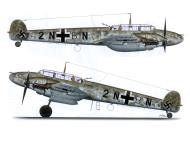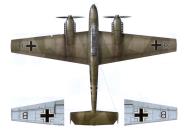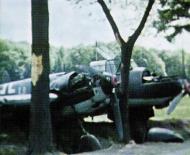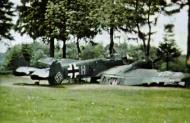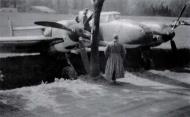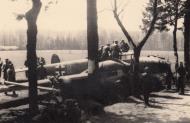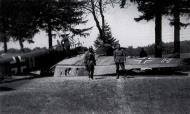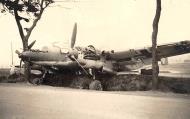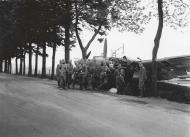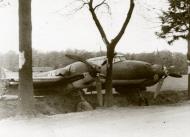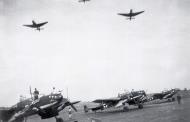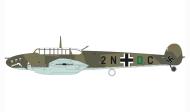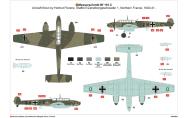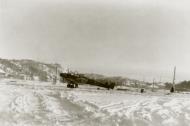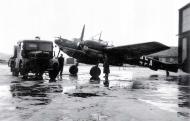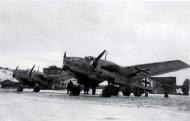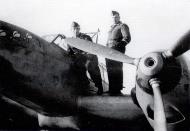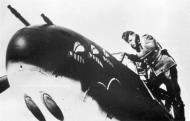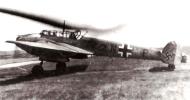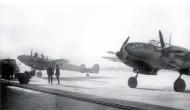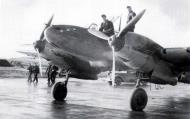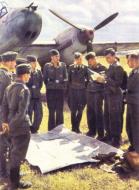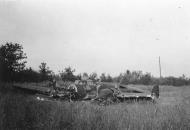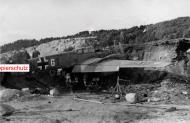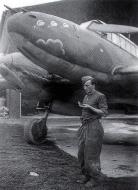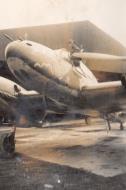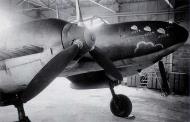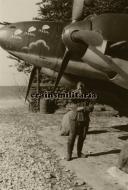Zerstörergeschwader 76 - ZG76 code 2N+
Messerschmitt Bf 110C4 Zerstorer 6./ZG76 (2NEP) Gerhard Kadow WNr 3551 shot down Lulworth July 11 1940 0A
Messerschmitt Bf 110C4 Zerstorer 9./ZG76 (2NEP) Gerhard Kadow WNr 3551 sd near Lulworth 11th July 1940 01
Messerschmitt Bf 110C4 Zerstorer 9./ZG76 (2NEP) Gerhard Kadow WNr 3551 sd near Lulworth 11th July 1940 02
Messerschmitt Bf 110C4 Zerstorer 9./ZG76 (2NEP) Gerhard Kadow WNr 3551 sd near Lulworth 11th July 1940 03
Messerschmitt Bf 110C4 Zerstorer 9./ZG76 (2NEP) Gerhard Kadow WNr 3551 sd near Lulworth 11th July 1940 04
Messerschmitt Bf 110C Zerstorer 6./ZG76 (2NAP) Urban Schlaffer n Franz Obser based in France 1940 0A
Messerschmitt Bf 110C Zerstorer 6./ZG76 (2NAP) Urban Schlaffer n Franz Obser based in France 1940 0B
Messerschmitt Bf 110C Zerstorer 6./ZG76 (2NAP) Urban Schlaffer n Franz Obser based in France 1940 0C
Messerschmitt Bf 110D1 Zerstorer II./ZG1 nose emblem Lt Schlossstein Stavanger Norway 4th Jan 1941 Avions 172 P46
1. Staffel I. Gruppe Zerstörergeschwader 76 - 1./ZG76 coded 2N+
Messerschmitt Bf 110 Zerstörer 1./ZG76 (2N+IH) force landed Poland 1939
Book Reference: Jet & Prop Foto-Archiv Band 13 has it as 3./ZG76
2. Staffel I. Gruppe Zerstörergeschwader 76 - 2./ZG76 coded 2N+
Messerschmitt Bf 110 Zerstörer 2./ZG76 (2N+HK) over Poland 1939
Book Reference: Jet & Prop Foto-Archiv Band 13
6. Staffel II. Gruppe Zerstörergeschwader 76 - 6./ZG76 coded 2N+
Messerschmitt Bf 110C Zerstörer 6./ZG76 (2N+AP) Urban Schlaffer France August 1940
Photo 01: Bf 110C, 2N+BN, of 6./ZG76 flown by Oberleutnant Urban Schlaffer and Obergefreiter Franz Obser Bordfunker were shot down by Spitfires from 602 squadron on 16th August 1940 and belly landed Lee Farm, Clapham near Worthing.
Profile 01: This aircraft, crewed by pilot Obl. Urban Schlaffer and gunner Gefr. Frantz Obser, was damaged in combat with No.602 Squadron, RAF, Spits on August 16, 1940, to the extent that no other choice other than a forced landing near Clapham in south Sussex was possible. The machine carried the original codes of 6./ZG76, from which the 9th Staffel was formed. The camouflage pattern was an innovated scheme, designed to lighten the otherwise very dark silhouette of the plane. The scheme was the result of overspraying the original dark green RLM70 with the light grey-green RLM02. The bottom color of RLM65 lightly crossed over the leading edge of the wing
Messerschmitt Bf 110C Zerstörer 9./ZG76, coded 2N+DP and flown by Hans Peterburs and based in Germany the Holland 1940
Messerschmitt Bf 110C 6./ZG76 (2N+EP) pilot Gerhard Kadow WNr 3551 shot down July 11 1940
Photo's 01-02: Two views of Bf 110C-4, 2N+EP W.Nr 3551, from 6./ZG76 shot down on 11 July 1940. Staffelkapitän, Obit. Gerhard Kadow, made a relatively good landing at Grange Heath, near Lulworth, both he and Bordfunker Gefr. Helmut Scholz surviving into captivity. Parts from this aircraft would later be used to get another captured Bf 110, 5F+CM, up to flying condition for the RAF to test-fly.
Messerschmitt Bf 110D 6./ZG76 (2N+MP) Leeuwarden Netherlands 1941

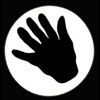 I. Gruppe Zerstörergeschwader 1 - I./ZG1 code 2N
I. Gruppe Zerstörergeschwader 1 - I./ZG1 code 2N
1. Staffel I. Gruppe Zerstörergeschwader 1- 1./ZG1 Coded 2N+
Messerschmitt Bf 110 C-1 1./ZG1 (2N+AH) Poland 1939.
Messerschmitt Bf 110C-2 1./ZG1 (2N+AH) Germany-Poland Spring 1940
Messerschmitt Bf 110C Zerstorer 1./ZG1 (2N+CH) 01
Photo 01: 2N+CH of I./ZG1 forms a backdrop to the burnt out remains of 2N+EH of the same Staffel.
Messerschmitt Bf 110C Zerstorer 1./ZG1 (2N+DH) landing accident 01
Photo 01: Unlike the previous photograph, the individual aircraft letter on this I.Staffel, ZG1 machine is blue outlined in white. This unique choice of Staffel colour for the third character in the fuselage code would be carried forward when the Staffel was re-designated I./Erpr. Gr. 210.
Messerschmitt Bf 110C Zerstorer 1./ZG1 (2N+EH) crash landed remains 01
Photo 01: 2N+CH of I./ZG1 forms a backdrop to the burnt out remains of 2N+EH of the same Staffel.
Messerschmitt Bf 110C Zerstörer 5./ZG1 (2N+GN) pilot Manfred Dahne 01
Photo 01: Bf 110C-1, W. Nr. 2831, of Fw. Manfred Dahne and his Bordfunker Herbert Klinke. Dahne and Klinke took part in II./ZG1's excursion over Switzerland on 8 June 1940.
Messerschmitt Bf 110C Zerstörer 5./ZG1 (2N+GN) pilot Manfred Dahne June 8 1940 01
Photo 01: The result of Dahne and Klinke's flight over Switzerland on 8 June. Dahne managed to put 2N+GN down in good condition following a fighter attack from a Swiss Bf-109 and hits from Flak. Both were repatriated. Dahne was killed in action later in the Battle of Britain; Klinke, after recovering from his wounds, went on to serve on the Russian front with SKG210 and ZG1 and survived the war.
Messerschmitt Bf 110C Zerstörer 1./ZG1 (2N+GH) 01
Photo 01: 2N+GH forms a backdrop for Victor M�lders and Staffelhund during the Western campaign. The fuselage cross is draped with an identical covering to that seen in an earlier photograph of a ZG52 Bf 110.
Messerschmitt Bf 110C Zerstorer 1./ZG1 (2N+IH) Karl Hammes and Walter Steffen crash landed near Warsaw Sep 6 1939
Photo 01: Bf 110C 1.ZG1 (2N+IH) Karl Hammes and Walter Steffen belly landing Warsaw Poland Sep 6 1939. Karl Hammes later died of his wounds.
Messerschmitt Bf 110C 1./LG1 (2N+IH) pilot Karl Hammes shot down Poland 1939 01-05
Photo's 01-05: Five views of Bf 110C-1, 2N+IH, which was shot down in combat on 6 September 1939. The pilot, Major Karl Hammes, the 43 year old Staffelkapitänof 1.Staffel died as a result of wounds suffered. His Bordfunker, Obfw. Walter Steffen, was taken into captivity, but later released when hostilities ended. Note that the '1' in the fuselage code is white with no outline, and the swastika overlaps both fin and rudder. The early style fuselage cross with a thin white outline can be clearly seen. The propeller spinner is in the Staffel colour of white. Hammes was buried beside his crashed aircraft.
Pilots Stfkpt Karl Hammes grave 01
Photo 01: The grave of Major Karl Hammes. The inscription on the cross translates as: 'Major of the Luftwaffe Hammes fell in combat for Führer and Greater Germany on 6.9.39.'
 II. Gruppe Zerstörergeschwader 1 - II./ZG1 code 2N
II. Gruppe Zerstörergeschwader 1 - II./ZG1 code 2N
4. Staffel II. Gruppe Zerstörergeschwader 1- 5./ZG1 coded 2N+
Messerschmitt Bf 110 C-4 4./ZG1 (2N+DM) Freiburg Airfield Germany Summer 1940.
5. Staffel II. Gruppe Zerstörergeschwader 1- 5./ZG1 coded 2N+
Messerschmitt Bf 110G-2 5./ZG1 (2N+EN) Germany Spring 1944.
Messerschmitt Bf 110 C1 Zerstörer 5./ZG1 (2N+GN) pilot Manfred Dahne and his Bordfunker Herbert Klinke WNr 2831 Battle of France 1940
Photo 01: Bf 110C-1, W. Nr. 2831, of Fw. Manfred Dahne and his Bordfunker Herbert Klinke. Dahne and Klinke took part in II./ZG1's excursion over Switzerland on 8 June 1940. W.Nr.2831, 2N+GN, 5./ZG 1, flown by Fw.Manfred D�hne, Bordfunker Ogfr. Herbert Klinke.
Messerschmitt Bf 110C Zerstörer 5./ZG1 (2N+GN) pilot Manfred Dahne June 8 1940 01
Photo 01: The result of Dahne and Klinke's flight over Switzerland on 8 June. Dahne managed to put 2N+GN down in good condition following a fighter attack from a Swiss Bf-109 and hits from Flak. Both were repatriated. Dahne was killed in action later in the Battle of Britain; Klinke, after recovering from his wounds, went on to serve on the Russian front with SKG210 and ZG1 and survived the war.
Messerschmitt Bf 110C Zerstörer 5./ZG1 (2N+GH) 01
Photo 01: 2N+GH forms a backdrop for Victor M�lders and Staffelhund during the Western campaign. The fuselage cross is draped with an identical covering to that seen in an earlier photograph of a ZG52 Bf 110.
This crew, during the Battle of France on June 8, 1940, came into conflict with units of the Swiss armed forces. 2N+GN first flew into concentrated anti aircraft fire over Belfort (France, and was subsequently attacked by French fighters. With a damaged starboard engine and an escort from another Bf 110, an attempt was made to reach friendly airspace. Due to a navigational error, the Swiss border was breached. Over Breitenbach, further AA was encountered, followed by an attack by Swiss Bf-109s, 2N+GN was made to force land at Oberkirchen. The crew was temporarily interned before being repatriated. Manfred Dahne returned to combat duty, but lost his life over England on August 25, 1940. Herbert Klinke bore the brunt of having shot down a Swiss aircraft, went on to fly over the Russian Front, and unlike Dahne, survived the war.
Additional Information Eduard plastic models - http://www.eduard.com/
Messerschmitt Bf 110G2 Zerstörer 5./ZG1 (2N+LN) Germany 1943
Messerschmitt Bf 110G2 Zerstörer 5./ZG1 (2N+MN) Wells Austria winter 1943-44
As a component of 'Reichverteidigung'(Defense of the Reich, this rocket and tub-mounted 20 mm cannon armed Bf 110G-2 of Zerstoregeschwader 1 carries a standard camouflage composed of RLM 74/75/76. Notable is the quick recognition marking consisting of the wide white band, a relic of combat operations over the MTO. The red individual aircraft letter 'M', as the spinner tips, place this aircraft within the services of 5. Staffel of II. Gruppe. Atypically, the fuselage crosses lack black borders. ZG 1, operating from airfields in Austria and Germany, took part in many engagements with American aircraft. These usually were from the 8th USAAF from England and from the 15th USAAF from Italy, and included the first major engagements between the USAAF and the Luftwaffe over Czech territory on February 22, 1944, in what became known as 'The BigWeek'.
Additional Information Eduard plastic models - http://www.eduard.com/
 III. Gruppe Zerstörergeschwader 1 - III./ZG1 code 2N
III. Gruppe Zerstörergeschwader 1 - III./ZG1 code 2N
Messerschmitt Bf 110C Zerstorer III./ZG1 01
Photo 01: A Bf 110C of 3./ZG1 carrying the Staffel emblem of a lion's head on the nose. Note the early style fuselage cross and the light-coloured spinner, almost certainly in the Staffel colour of yellow.
7. Staffel III. Gruppe Zerstörergeschwader 1 - 7./ZG1
Messerschmitt Bf 110C Zerstörer 7./ZG1 (2J+AR) in flight
Messerschmitt Bf 110C Zerstörer 7./ZG1 (2N+KR) Norway 1941
10. Staffel IV. Gruppe Zerstörergeschwader 1- 10./ZG1
Messerschmitt Bf 110G 10./ZG1 (2N+IU) pilot Kociok Crimea 1943
Pilots 4./ZG1 pilot Josef Kociok 01
Photo 01: Josef Kociok began the war with III./ZG76 and, after the German invasion of Russia in June 1941, transferred to the IV./Schnellkampfgeschwader (Fast Bomber Wing) 210. When night fighting operations began in Russia, he transferred to 4./(N)ZG1 and within a relatively short space of time, shot down 21 bombers. He was awarded the Knight's Cross on 31 July 1943 but was killed two months later.
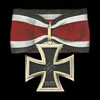
Josef Kociok
Units: 7/ZG-76, 4/SKG-210, 4/ZG-1 (7/42 S.U., 10(Nacht)/ZG-1 (2/43 S.U., 5/NJG-200 (9/43 S.U.)
Awards: RK(7/31/43, DK-G(12/14/42, EP(6/1/42, EK 1 & 2, Wnd Bdg, Destroyer & Night Fighter Oper.Clasps
Known Aircraft: Bf 110G-2 WNr 6392 (lost 9/43)
Remarks: KIA 26 September, 1943 near Kertsch, when he collided with a crashing Russian DB-3 AC, and his parachute failed to open. His R/O, Alexander Wegerhoff survived by parachuting. In addition to his aerial victories, he was credited with another 15 AC on the ground, 4 tanks and 200 vehicles. All victories in the East, 21 were Night victories. His first known victory, a Soviet Seversky on 8 July, 1942, a Fw at the time. A 2nd, an I-18 on 25 February, 1943. A 3rd & 4th, an MBR-2 and a DB-3 N of Kortsch on 12 March, 1943. Nos 5 & 6, An SB-2 and a Yak-4 the night of 26-27 April, 1943. Three PS-84's and an SB-2 the night of 15-16 May, 1943. Two Soviet Boston's the night of 16-17 June, 1943. A PS-84 SE of Taman on 1 July, 1943. An R-5 at Krimskaya on the night of 27-28 July, 1943. Three R-5's in the Krimskaya area on the night of 31 July, 1943. Two Bostons and an I-18 on 17 September, 1943. An I-18 on 18 September, 1943. An MBR-2 in the Nevel area on 26 September, 1943, the day he was KIA. Buried in the cemetery at Kertsch.
Josef Kociok was born in Alt-Schalkendorf, High Silesia on 26 of April of 1918. He started his military career in the autumn of 1940 with 7./ZG 76 , besed in Stavanger-Sola, Norway.
In 24th April 1941 III./ZG76 was renamed in II./SKG210. And soon was engaged in the “Barbarossa Operation”, started 22.06.41. With his Staffel, now named 4./SKG 210, Kociok would mainly execute missions against airfields, vehicles, trains, tanks, Flak and anti-tank gun positions, and also attacks against the Soviet infantry. On 30.06. 41 he scored his first aerial victory. 04.02.42 his Staffel was again renamed: now into 4./ZG 1. By his performance in combat missions, Kociok was decorated with the Ehrenpokal on 01.06.1942. On 14.12. 42 he reseived Deutschen Kreuz in Gold for the successful actions over Kuban area.
At the same time, he specialized himself in missions of night hunt for the Soviet night bombers, as Po-2 and R-5. This ltlle biplanes gived great trouble to German Army, attacking different targets near frontline at night, making impossible the well rest of German soldiers. The most successful Po-2 unit was “Womens” 46th Guards Taman' Night Bomber Regiment. Soviet statistics show this unit to have flown about 23,672 sorties and the unit was credited with dropping 3,000 tons of bombs. (Please note that the maximum bomb load of a Po-2 plane was only 300 kg!).
As a counter-measure, Fliegerkorps IV organized an improvised night-fighter unit of 10(Nachtjagd)./ZG1. Operating with the support of searchlights, the Bf 110s of this unit took a heavy toll of the slow and brittle Po-2 biplanes once they encountered them in the air. The Po-2 aircraft was easily set on fire by either the antiaircraft or machine-gun tracers, and the plane was almost always doomed. The crew could not escape, because parachutes were not provided until the summer of 1944.
In early 1943, he was transferred to 10(Nachtjagd)./ZG1.
At this time he had: 12 aerial victoryes plus 15 aircraft, 4 tanks, 141 railroad wagons, 80 motor vehicles, 4 locomotives, 2 bridges and 1 Flak position destroyed on the ground.
When on 31 of July of 1943 Oberfeldwebel Josef Kociok as awarded with the Ritterkreuz, he had 15 night vistoryes in addition to day victoryes on his score.
On 31.07.43 during a single night he destroyed four Po-2s from 46th Guards Taman' Night Bomber Regiment in a row. Serafima Amosova, pilot of one of the survived Po-2's, witnessed this event: 'One night, as our aircraft passed over the target, the searchlights came on, the antiaircraft guns were firing, and then a green rocket was fired from the ground. The antiaircraft guns stopped, and a German fighter plane came and shot down four of our aircraft as each one came over the target. Our planes were burning like candles. We all witnessed this scene. When we landed and reported that we were being attacked by German fighters, they would not let us fly again that night. We lived in a school building with folding wooden beds. You can imagine our feelings when we returned to our quarters and saw eight beds folded, and we knew they were the beds of our friends who perished a few hours ago.'
In September of 1943, NachtJagdStaffel./ZG1 officially was redesignated as 5./NJG200. With this Staffel Kociok scored his last 6 victoryes – 2 Boston Mk.III bombers and Yak-7 in one mission on 17.09.43. On 18.09.43 he scored Yak-7, and later – 2 MBR-2 flying boats – on 24.09.43 and 26.09.43.
However, in the night of 26/27 of September of 1943, he engaged Il-4 bomber in a combat over Kertch (East Crimea, attacked it from close distanse. Il-4 was hit, but Kociok could not break off and rammed his burning victim. He ordered to his bordfunker Feldwebel Wegerhoff to jump, and decided to bellyland his heavy damaged Bf110G-2 (W.Nr. 6392). Unfortunatly, it was impossible, and Kociok used his parashute at least.
But his parachute failed to open.
Josef Kociok was credited with 33 victories having flown over 200 missions. He recorded 21 victories as night victoryes. He flew in following units: 7./ZG 76, 4./SKG210, 4./ZG 1, 10(Nachtjagd)./ZG1, 5./NJG200
He was posthumously promoted to the rank of Leutnant.
Asisbiz database list of 22 aerial victories out of 33 for Josef Kociok
Date Pilot Name Unit Enemy A/C Type Height Time Location Thursday, February 25, 1943 Josef Kociok 10.(N)/ZG1 I-18 80m 09:35 66 835 Friday, March 12, 1943 Josef Kociok 10.(N)/ZG1 MBR-2 3200m 21:43 North of Kortsch Friday, March 12, 1943 Josef Kociok 10.(N)/ZG1 DB-3 3000m 21:45 North of Kortsch Monday, April 26, 1943 Josef Kociok 10.(N)/ZG1 SB-2 22:25 59 593 Briefbuch Nr keine Monday, April 26, 1943 Josef Kociok 10.(N)/ZG1 Yak-4 22:30 59 623 Briefbuch Nr keine Saturday, May 15, 1943 Josef Kociok 10.(N)/ZG1 PS-84 1000m 21:39 34 Ost/59 392 Saturday, May 15, 1943 Josef Kociok 10.(N)/ZG1 PS-84 1200m 21:41 34 Ost/59 399 Saturday, May 15, 1943 Josef Kociok 10.(N)/ZG1 SB-2 3500m 22:05 34 Ost/59 365 Saturday, May 15, 1943 Josef Kociok 10.(N)/ZG1 PS-84 3000m 22:54 34 Ost/59 311 Wednesday, June 16, 1943 Josef Kociok 10.(N)/ZG1 A-20 Boston 3000m 21:20 66 881 Briefbuch Nr keine Wednesday, June 16, 1943 Josef Kociok 10.(N)/ZG1 A-20 Boston 4500m 21:00 66 364 Briefbuch Nr keine Thursday, July 01, 1943 Josef Kociok 10.(N)/ZG1 PS-84 1000m 21:00 SE Taman’ Tuesday, July 27, 1943 Josef Kociok 10.(N)/ZG1 R-5 1200m 21:20 Krimskaya Saturday, July 31, 1943 Josef Kociok 10.(N)/ZG1 R-5 1200m 21:15 Krimskaya Saturday, July 31, 1943 Josef Kociok 10.(N)/ZG1 R-5 22:00 Raum Krimskaya Saturday, July 31, 1943 Josef Kociok 10.(N)/ZG1 R-5 22:05 Raum Krimskaya Friday, September 17, 1943 Josef Kociok 5./NJG200 A-20 Boston 2000m 14:00 76 62 Friday, September 17, 1943 Josef Kociok 5./NJG200 A-20 Boston 2000m 14:01 76 62 Friday, September 17, 1943 Josef Kociok 5./NJG200 I-18 2000m 14:04 76 62 Saturday, September 18, 1943 Josef Kociok 5./NJG200 I-18 50m 10:05 76 53 Friday, September 24, 1943 Josef Kociok 5./NJG200 MBR-2 1500m 01:48 66 89 Sunday, September 26, 1943 Josef Kociok 5./NJG200 MBR-2 1500m 20:20 66 852
The Bf 110D was a long range version of the Bf 110C. It was developed in part to deal with the long distances involved in the campaign in Norway, and also to give it a longer effective range as an anti-shipping aircraft. It operated against the last British and French positions in the far north of Norway, and was also used in long range raids against northern Britain, although only made one daylight raid.
Messerschmitt Bf 110D-1/R-1
This was the first attempt at producing a long range version of the Bf 110. It had a massive 1200 litre/ 198 gallon external belly tank below the fuselage. This had a massive impact on the aircraft's performance. Only the second rate nature of most of the allied aircraft in Norway, where the D-1 first served, saved it from disaster. The D-1/R-1 entered service in May 1940.
Messerschmitt Bf 110D-1/R2
The large belly tank on the D-1/R-1 made it very vulnerable to allied fighters. Accordingly, on the R2 the fixed tank was replaced by two 900 litre/ 198 imperial gallon drop tanks, carried under the outside wings. This gave the aircraft an even longer range, but improved the performance, and allowed for the jettisoning of the tanks when needed.
Messerschmitt Bf 110D-2
The D-2 carried both the ETC 500 bomb rack, capable of taking two 1102 lb/ 500 kg bombs, and two wing mounted 66 imperial gallon drop tanks.
Messerschmitt Bf 110D-3
The D-3 was a long range shipping patrol version. It could carry two drop tanks, of either the 900 litre/ 198 gallon size or the 300 litre/ 66 gallon size. It could also take the ETC 500 bomb rack. Space was made in the fuselage for a two man life raft, in case the aircraft was shot down while far out to sea.
Combat Record
Norway
The Bf 110D-1 first saw combat in Norway, where its increased range was essential for operations against the last British and French forces in the far north at Narvik. The first unit to be equipped with the D-1 was I./ZG 76. That unit was moved to Trondheim on 18 May, from where it launched long range attacks on Narvik. This was a four and half hour round trip, over 800 miles.
Battle of Britain
One of the most famous incidents involving the Bf 110D was the raid on the north of England launched from Norway on 15 August 1940, during the Battle of Britain. Goring was confident that the R.A.F. had been forced to move its entire fighter force south to deal with the attacks coming from France, and so on 15 August launched raids further north expecting to find little or no resistance. Instead, the raiders discovered No. 72 Squadron's Spitfires, withdrawn from the battle over Kent to recover. Six Bf 110Ds were shot down, as were eight He 111 bombers. No more daylight raids were launched from Norway.
Luftwaffe pilot Walter Nowotny 258 kills
Luftwaffe pilot Theodor Weissenberger 208 kills
Luftwaffe pilot Heinz Bar 175 kills
Luftwaffe pilot Franz Schall 133 kills
Luftwaffe pilot Rudolf Rademacher 126 kills
Luftwaffe pilot Adolf Galland 104 kills
Luftwaffe pilot Hermann Buchner 58 kills
Luftwaffe pilot Erich Hohagen 50 kills
Luftwaffe pilot Rudolf Sinner 39 kills
Luftwaffe pilot Ernst-Wilhelm Modrow 32 kills
Luftwaffe pilot Richard Altner 25 kills
Luftwaffe pilot Gunther Wegmann 21 kills
Luftwaffe pilot Wolfgang Schenck 18 kills
Luftwaffe pilot Franz Holzinger 10 kills
Luftwaffe pilot Helmut Lennartz 10 kills
Luftwaffe pilot Alfred 'Bubi' Schreiber 9 kills
Luftwaffe pilot Eduard Schallmoser 3 kills
Luftwaffe pilot Wilhelm Batel 1 kills
Luftwaffe pilot Joachim Fingerlos 1 kills
Bibliography: +
- Campbell, Jerry L. Messerschmitt BF 110 Zerstörer in Action. Carrollton, Texas: Squadron/Signal Publications, Inc., 1977. ISBN 0-89747-029-X.
- Caldwell, Donald and Richard Muller. The Luftwaffe over Germany: Defence of the Reich. London: Greenhill Books, 2007. ISBN 978-1-85367-712-0.
- Ciampaglia, Giuseppe. 'Destroyers in Second World War'. Rome: IBN editore, 1996. ISBN 88-86815-47-6.
- Deighton, Len. Fighter: The True Story of the Battle of Britain. London: Pimlico, 1996. ISBN 0-7126-7423-3.
- de Zeng, H. L., D. G. Stanket and E. J. Creek. Bomber Units of the Luftwaffe 1933-1945: A Reference Source, Volume 2. London: Ian Allan Publishing, 2007. ISBN 978-1-903223-87-1.
- Donald, David, ed. Warplanes of the Luftwaffe. London: Aerospace, 1994. ISBN 1-874023-56-5.
- Geust, Carl-Fredrik and Gennadiy Petrov. Red Stars Vol 2: German Aircraft in the Soviet Union. Tampere, Finland: Apali Oy, 1998. ISBN 952-5026-06-X.
- Hirsch, R.S. and Uwe Feist. Messerschmitt Bf 110 (Aero Series 16). Fallbrook, California: Aero Publishers, Inc., 1967.
- Hooton, E.R.Luftwaffe at War; Blitzkrieg in the West: Volume 2. London: Chervron/Ian Allan, 2007. ISBN 978-1-85780-272-6.
- Hooton, E.R. Luftwaffe at War; Gathering Storm 1933-39: Volume 1. London: Chervron/Ian Allan, 2007. ISBN 978-1-903223-71-0.
- Ledwoch, Janusz. Messerschmitt Bf 110 (Aircraft Monograph 3). Gdańsk, Poland: AJ-Press, 1994. ISBN 83-86208-12-0.
- Likso, T. and D. Canak. Hrvatsko Ratno Zrakoplovstvo u Drugome Svjetskom Ratu (The Croatian Airforce in the Second World War). Zagreb, 1998. ISBN 953-97698-0-9.
- Mankau, Heinz and Peter Petrick. Messerschmitt BF 110/Me 210/Me 410: An Illustrated History. Atglen, PA: Schiffer Publishing, 2003. ISBN 0-7643-1784-9.
- Murray, Willamson. Strategy for Defeat: The Luftwaffe 1935-1945. Maxwell AFB, Al: Air Power Research Institute, 1983. ISBN 0-16-002160-X.
- Mackay, Ron. Messerschmitt Bf 110. Wiltshire, UK: The Crowood Press, 2000. ISBN 1-86126-313-9
- Middlebrook, Martin. The Peenemunde Raid: The Night of 17-18 August 1943. Barnsely, UK: Pen & Sword Aviation, 2004. ISBN 1-84415-336-3.
- Munson, Kenneth. Fighters and Bombers. New York: Peerage Books, 1983. ISBN 0-907408-37-0.
- Price, Alfred. Messerschmitt Bf 110 Night Fighters (Aircraft in Profile No. 207). Windsor, Berkshire, UK: Profile Publications Ltd., 1971.
- Savic, Dragan and Boris Ciglic. Croatian Aces of World War II (Osprey Aircraft of the Aces - 49). London: Oxford, 2002. ISBN 978-1-84176-435-1.
- Treadwell, Terry C. Messerschmitt Bf 110(Classic WWII Aviation). Bristol, Avon, UK: Cerberus Publishing Ltd., 2005. ISBN 1-84145-107-X.
- Van Ishoven, Armand. Messerschmitt Bf 110 at War. Shepperton, Surrey: Ian Allan Ltd., 1985. ISBN 0-7110-1504-X.
- The Messerschmitt Bf 110 in Color Profile 1939-1945 John Vasco and Fernando Estanislau by Schieffer Publications. ISBN:0-7643-2254-0
- Wagner, Ray and Heinz J. Nowarra. German Combat Planes: A Comprehensive Survey and History of the Development of German Military Aircraft from 1914 to 1945. New York: Doubleday, 1971.
- Weal, John. Messerschmitt Bf 110 Zerstörer Aces World War Two. London: Osprey, 1999. ISBN 1-85532-753-8.
Magazine References: +
- Airfix Magazines (English) - http://www.airfix.com/
- Avions (French) - http://www.aerostories.org/~aerobiblio/rubrique10.html
- FlyPast (English) - http://www.flypast.com/
- Flugzeug Publikations GmbH (German) - http://vdmedien.com/flugzeug-publikations-gmbh-hersteller_verlag-vdm-heinz-nickel-33.html
- Flugzeug Classic (German) - http://www.flugzeugclassic.de/
- Klassiker (German) - http://shop.flugrevue.de/abo/klassiker-der-luftfahrt
- Le Fana de L'Aviation (French) - http://boutique.editions-lariviere.fr/site/abonnement-le-fana-de-l-aviation-626-4-6.html
- Le Fana de L'Aviation (French) - http://www.pdfmagazines.org/tags/Le+Fana+De+L+Aviation/
- Osprey (English) - http://www.ospreypublishing.com/
- Revi Magazines (Czech) - http://www.revi.cz/
Web References: +
- Wikipedia.org - https://en.wikipedia.org/wiki/Messerschmitt
 Editor for Asisbiz: Matthew Laird Acred
Editor for Asisbiz: Matthew Laird Acred
If you love our website please subscribe to our YouTube video channel
Please donate so we can make this site even better !!

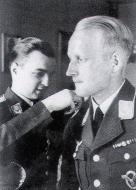
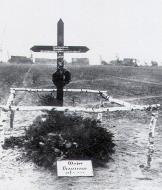
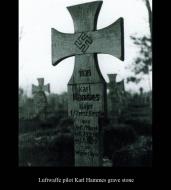

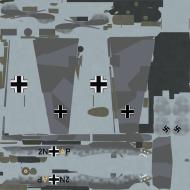
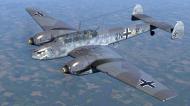
LG1-2N+CH-ILSE-Poland-1939.jpg)
LG1-2N+CH-ILSE-Poland-1939-V02.jpg)
LG1-2N+IH-Karl-Hammes-sd-Poland-1939.jpg)
LG1-2N+IH-Karl-Hammes-sd-Poland-1939-V01.jpg)
LG1-2N+IH-Karl-Hammes-sd-Poland-1939-V02.jpg)
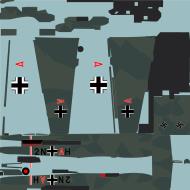
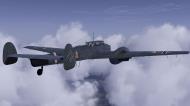
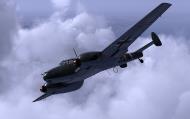
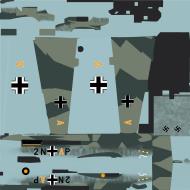
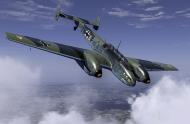
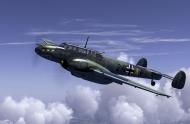
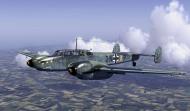
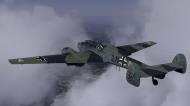
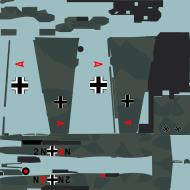
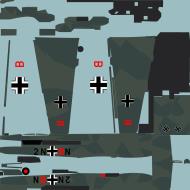
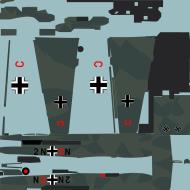
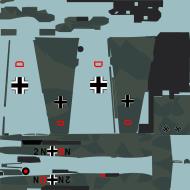
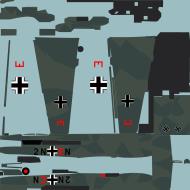
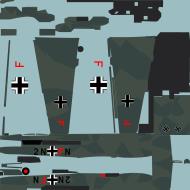
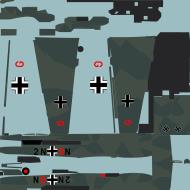
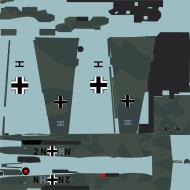
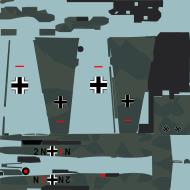
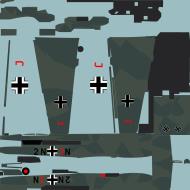
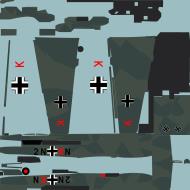
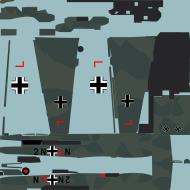
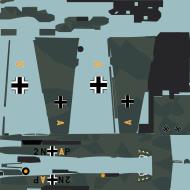
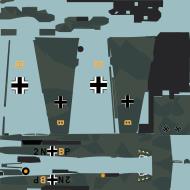
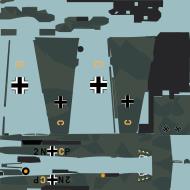
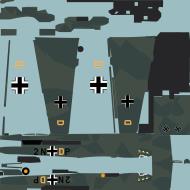
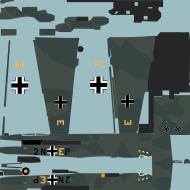
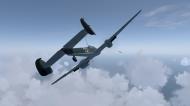
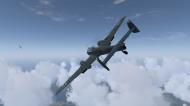
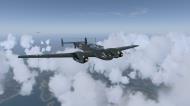
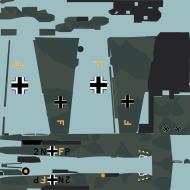
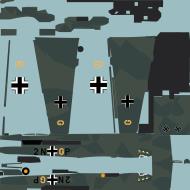
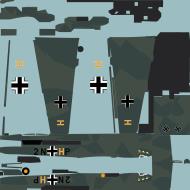
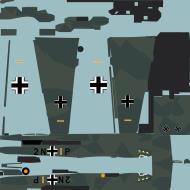
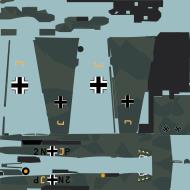
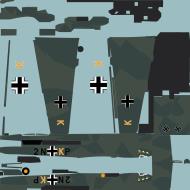
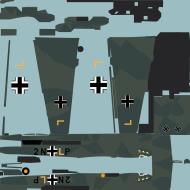
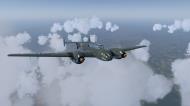
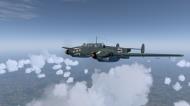
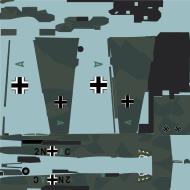


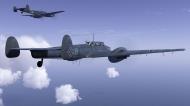
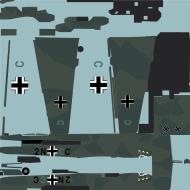


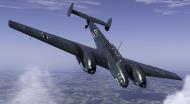
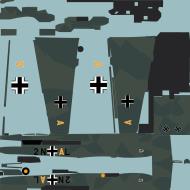
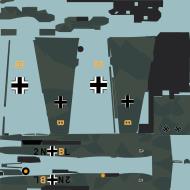
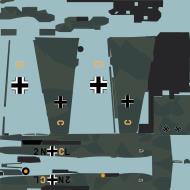
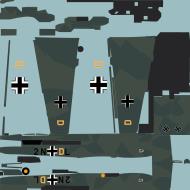
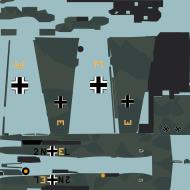
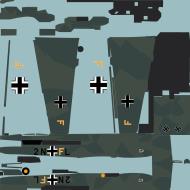
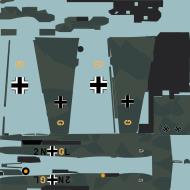
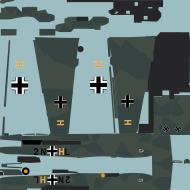

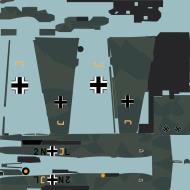
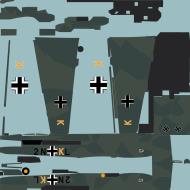
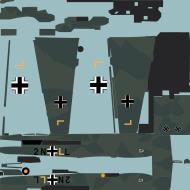
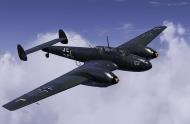
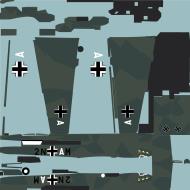
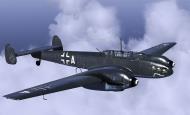
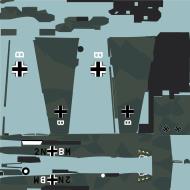

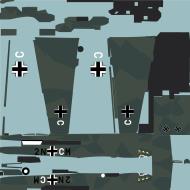
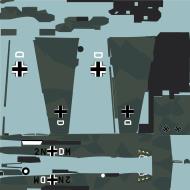
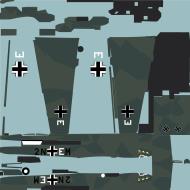
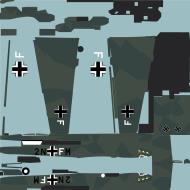
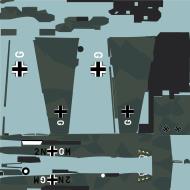
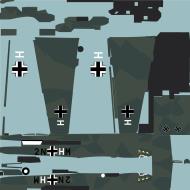
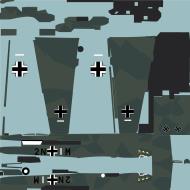
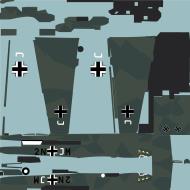
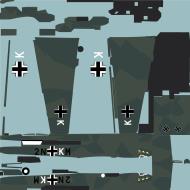
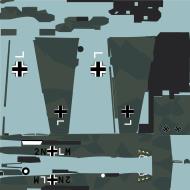
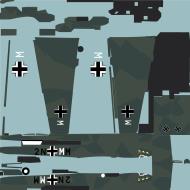
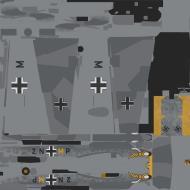
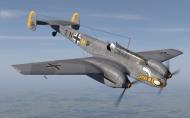
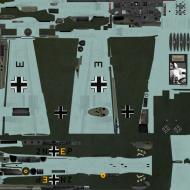

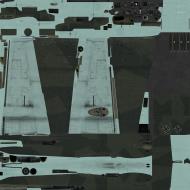
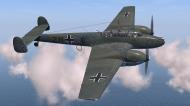
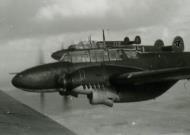
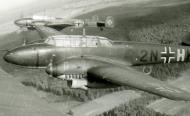



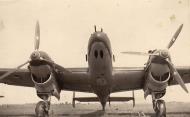
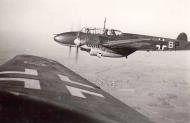
LG1-2N+IH-force-landed-ebay-01.jpg)
LG1-2N+IH-Karl-Hammes-shot-down-Poland-1939-01.jpg)
LG1-2N+IH-Karl-Hammes-shot-down-Poland-1939-02.jpg)
LG1-2N+IH-Karl-Hammes-shot-down-Poland-1939-03.jpg)
LG1-2N+IH-Karl-Hammes-shot-down-Poland-1939-04.jpg)
LG1-2N+IH-Karl-Hammes-shot-down-Poland-1939-05.jpg)
LG1-2N+IH-Karl-Hammes-shot-down-Poland-1939-06.jpg)
LG1-2N+IH-Karl-Hammes-shot-down-Poland-1939-07.jpg)
LG1-2N+IH-Karl-Hammes-shot-down-Poland-1939-08.jpg)
LG1-2N+IH-Karl-Hammes-shot-down-Poland-1939-09.jpg)
LG1-2N+IH-Karl-Hammes-shot-down-Poland-1939-0A.jpg)
LG1-2N+IH-Karl-Hammes-shot-down-Poland-1939-0B.jpg)
LG1-2N+IH-Karl-Hammes-shot-down-Poland-1939-10.jpg)
LG1-2N+IH-Karl-Hammes-shot-down-Poland-1939-11.jpg)

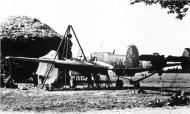

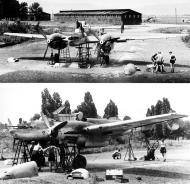
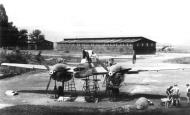
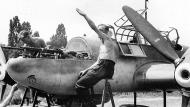


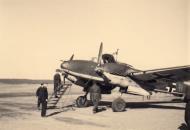

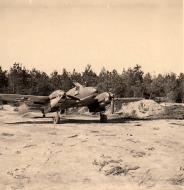
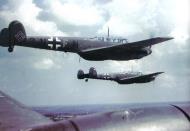
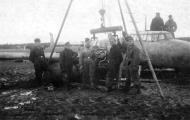

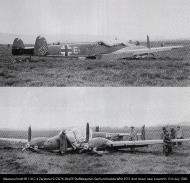




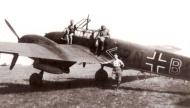
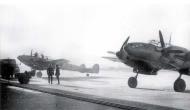




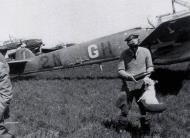
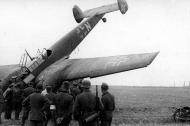

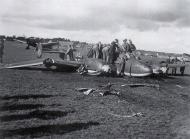
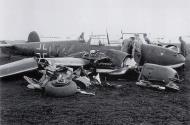
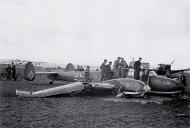
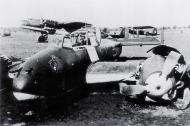
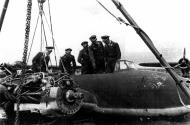
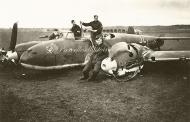
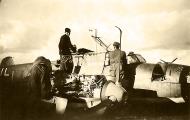
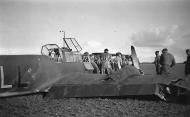
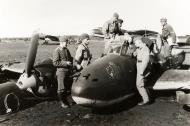
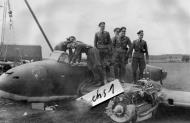
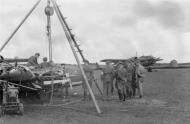
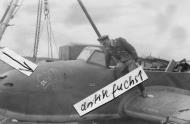
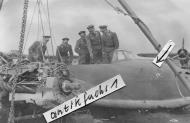
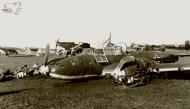
JG77-2N+FN-and-2N+AN-aerial-photo-01.jpg)

